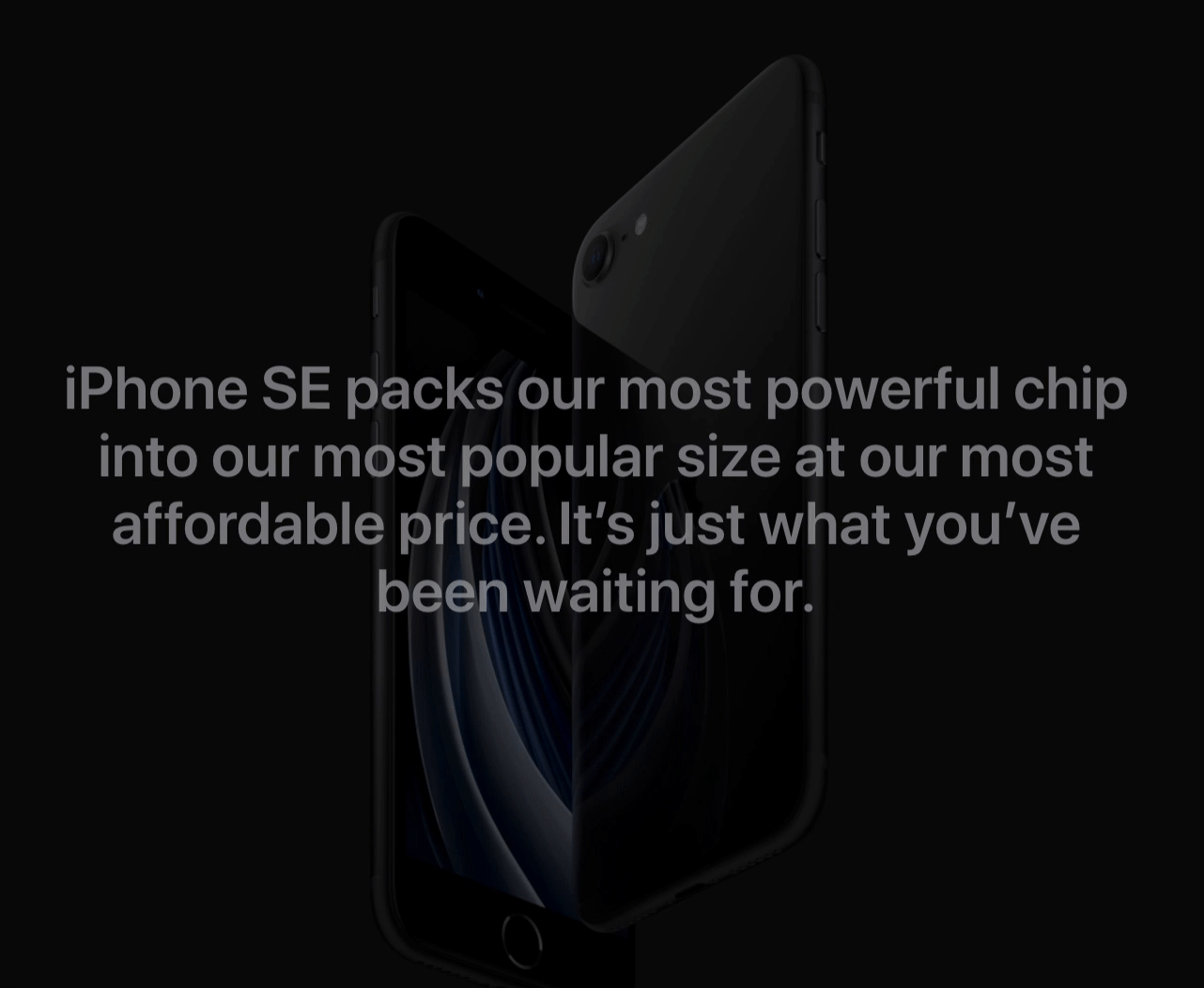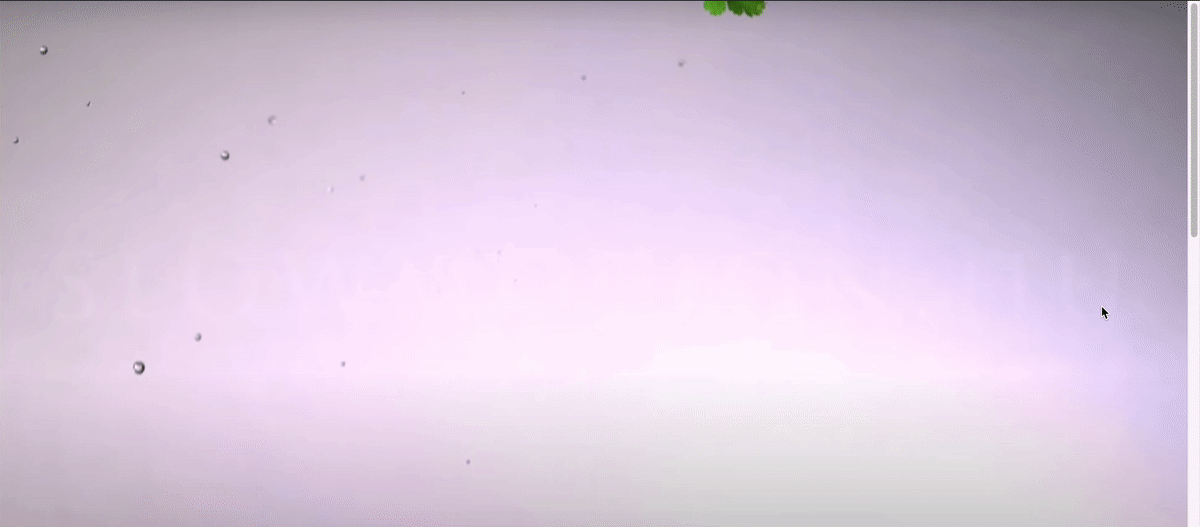页面滚动时触发图片逐帧播放
A step by step guide on how to create that dynamic image background you see everywhere.
有关如何创建随处可见的动态图像背景的逐步指南。
内容 (Content)
- Introduction 介绍
- Result demo 结果演示
- Prerequisite 先决条件
- Step by step guide 逐步指南
- Next step 下一步
介绍 (Introduction)
Moving an image on scroll is the new parallax for the frontend. In the old days, parallax was everywhere. But it rarer for new websites. Instead, we see a lot of moving image by scrolling pattern — for example, apple new iPhone SE website:
滚动移动图像是前端的新视差。 在过去,视差无处不在。 但这对于新网站来说很少见。 取而代之的是,我们通过滚动模式看到了很多动态图像,例如,苹果新的iPhone SE网站:

As you can see, the iPhone rotates frame by frame as you scroll down. In this tutorial, I will share my approach for reproducing such pattern.
如您所见,iPhone在向下滚动时会逐帧旋转。 在本教程中,我将分享重现这种模式的方法。
结果演示 (Result demo)

Codepen: https://codepen.io/josephwong2004/pen/wvKPGEO
Codepen: https ://codepen.io/josephwong2004/pen/wvKPGEO
先决条件 (Prerequisite)
Just basic knowledge in CSS and JS
只是CSS和JS的基础知识
逐步指南 (Step by step guide)
Step 1: Get some images
第1步:获取一些图片
Okay, I guess you already figured it out. The “Moving image” is actually just a bunch of images with small differences, and played frame by frame like an animation. By mapping the scroll position to a corresponding image, we get an illusion of the object in the images itself is moving or rotating.
好的,我想您已经知道了。 “运动图像”实际上只是一堆差异很小的图像,并且像动画一样逐帧播放。 通过将滚动位置映射到相应的图像,我们得到图像本身在运动或旋转中的幻觉。
As you can see from the demo, I get some images for vegetable falling down (20 in total).
从演示中可以看到,我得到了一些蔬菜掉落的图像(总共20个)。
The images I am using is from this youtube video, I don’t own the images, only using it for tutorial purpose. Source:
我使用的图片来自此youtube视频,我不拥有图片,仅将其用于教学目的。 资源:
https://www.youtube.com/watch?v=8DsDH3JQ384
https://www.youtube.com/watch?v=8DsDH3JQ384
Step 2: Setup the basic
步骤2:设定基本
Let start building our “moving image” effect. The html is very simple:
让我们开始构建我们的“运动图像”效果。 html非常简单:
<div class='container'>
<div class='image-container'></div>
</div>We will put the image in the ‘image-container’ class. For CSS:
我们将图像放在“图像容器”类中。 对于CSS:
body {
margin: 0;
font-family: 'Permanent Marker', cursive;
}.container {
position: relative;
width: 100%;
height: 1500px;.image-container {
width: 100%;
height: 0;
padding-top: 45.347%;
position: sticky;
top: 0;
background-size: cover;
background-image: url('https://drive.google.com/uc?id=1vtaubItASKilyvb5sgQO7D7gjAQ7xo0i');
}
}Now, most things there is pretty standard. I added a font for the overlay text later. For the image-container itself, we want it to be as large as the page width, and have a dynamic height. Unfortunately, we cannot do height: auto here, as our image-container doesn’t have any content, and the background-image doesn’t count. The container will always be 0px in height.
现在,大多数事情都是相当标准的。 稍后,我为叠加文字添加了一种字体。 对于图像容器本身,我们希望它与页面宽度一样大,并具有动态高度。 不幸的是,我们不能做height: auto这里height: auto ,因为我们的图像容器没有任何内容,并且背景图像也不计数。 容器的高度始终为0px。
In order to compensate that, instead, we use a padding-top with percentage. This percentage is not random, but the image height to width ratio (height /width * 100%). With that and background-size: cover, we have container that fill up the whole page.
为了补偿这一点,我们使用带有百分比的padding-top。 该百分比不是随机的,而是图像的高宽比(高/宽* 100%)。 通过那和background-size: cover ,我们有一个容器可以填满整个页面。
Step 3: Add scrolling effect
步骤3:添加滚动效果
With the background image set, let’s add some JS to our code to make it “move”.
设置好背景图像后,让我们在代码中添加一些JS,使其“移动”。
I have uploaded 20 images to google drive, and stored their links like so:
我已将20张图片上传到Google驱动器,并按以下方式存储了它们的链接:
// Images asset
const fruitImages = {
1:'https://drive.google.com/uc?id=1vtaubItASKilyvb5sgQO7D7gjAQ7xo0i',
2:'https://drive.google.com/uc?id=1FJNbSIMKRPBnGPienoYK1Qf8wIwQSdpR',
3:'https://drive.google.com/uc?id=1TODQyZgnCjDX2Slr0ll8g-ymIV8Yizkh',
....... (I am not going to copy everything here)
20:'https://drive.google.com/uc?id=1D7PBddCxxb6aRk43maJ_BXgQD-PRS6R7',
}Tips:
提示:
The default google drive share link is something like:https://drive.google.com/open?id=1vtaubItASKilyvb5sgQO7D7gjAQ7xo0i
默认的Google驱动器共享链接类似于: https : //drive.google.com/open?id=1vtaubItASKilyvb5sgQO7D7gjAQ7xo0i
To use it in code, you need to replace the /open? with /uc?
要在代码中使用它,您需要替换/ open? / uc?
Each key represent one “frame” in our scroll animation. Next, let add our scrolling function:
每个键代表我们滚动动画中的一个“帧”。 接下来,让我们添加滚动功能:
// Global variable to control the scrolling behavior
const step = 30; // For each 30px, change an imagefunction trackScrollPosition() {
const y = window.scrollY;
const label = Math.min(Math.floor(y/30) + 1, 20);
const imageToUse = fruitImages[label];
// Change the background image
$('.image-container').css('background-image', `url('${imageToUse}')`);}$(document).ready(()=>{
$(window).scroll(()=>{
trackScrollPosition();
})
})I am using jquery here just for convenience. The logic is very simple, we are creating a keyframe animation, but instead of time, we use pixel as our basic unit to calculate when should the next frame appear.
我在这里使用jquery只是为了方便。 逻辑很简单,我们正在创建关键帧动画,但是我们使用像素作为基本单位来计算下一帧的显示时间,而不是时间。
We are interested in the current scrollY value, which indicate how far the user has scrolled. We also create a step variable for the min and max bound of each frame to display on screen. With step set to 30, assuming the user keep scrolling, each image will display for “30px” worth of scroll time.
我们对当前的scrollY值感兴趣,该值指示用户滚动了多远。 我们还为要在屏幕上显示的每帧的最小和最大范围创建一个step变量。 将step设置为30,假设用户继续滚动,则每个图像将显示“ 30px”的滚动时间。
Our onScroll function calculate which image to use for the current scrollY position, and then set the .image-container background-image property.
我们的onScroll函数计算要用于当前scrollY位置的图像,然后设置.image-container background-image属性。

Let have a look as our result:
让我们看一下结果:

Pretty nice! Now let add the text as well.
挺棒的! 现在,还要添加文本。
Step 4: Add floating text
步骤4:添加浮动文本
In addition to the moving background, we also want some text floating on top of the image to convey our message.
除了运动的背景之外,我们还希望一些浮在图像上方的文本来传达我们的信息。
My approach for adding the text is also very simple (a.k.a. stupid). Since I have 20 “frames” for my image, I simply create another array to store the corresponding style of the text in each “frame”. (Using the same array would be better, but for tutorial purpose, I use a new array here)
我添加文本的方法也非常简单(又称愚蠢)。 由于我的图像有20个“框架”,因此我只需创建另一个数组即可在每个“框架”中存储文本的相应样式。 (使用相同的数组会更好,但是出于教学目的,我在这里使用了一个新数组)
But first thing first, let add some html and css first:
但是首先,让我们先添加一些html和CSS:
html:
HTML:
<div class='container'>
<div class='image-container'></div>
<div class='text-container'>
<div class='subtitle' id='line1'>These lines float in one by one</div>
<div class='title' id='line2'>How to make</div>
<div class='title' id='line3'>Moving background</div>
<div class='subtitle' id='line4'>Disappear again when scroll top</div>
</div>
</div>css:
CSS:
.text-container {
width: 100%;
height: 100%;
position: fixed;
display: flex;
flex-direction: column;
justify-content: center;
align-items: center;
top: 0;
color: white;
.subtitle {
opacity: 0;
font-size: 30px;
}
.title {
opacity: 0;
font-size: 80px; margin: -20px 0;
}
}Now, let add the keyframe for the text style in an array:
现在,让我们在数组中添加文本样式的关键帧:
const textStyle = {
1: {opacity: 0, transform: '0px'},
2: {opacity: 0, transform: '0px'},
3: {opacity: 0, transform: '0px'},
4: {opacity: 0, transform: '0px'},
5: {opacity: .25, transform: '15px'},
6: {opacity: .5, transform: '10px'},
7: {opacity: .75, transform: '5px'},
8: {opacity: 1, transform: '0px'},
... 9 - 19are the same with 8
20: {opacity: 1, transform: '0px'}
]Each text has 5 states:
每个文本有5种状态:
- Invisible, no transformation 隐形,不变形
- 25% visible, transform down 15px 可见25%,向下转换15像素
- 50% visible, transform down 10px 可见50%,向下转换10像素
- 75% visible, transform down 5px 可见75%,向下变换5像素
- Full visible, no transformation 完全可见,无需变换
You can see for 1 to 4 frames, the text is invisible, and for 8–20 frames, the text is always visible. So our text stay there after scrolling certain amount.
您可以看到1到4帧,该文本是不可见的,而对于8–20帧,该文本始终是可见的。 因此,在滚动一定数量后,我们的文本会停留在该位置。
Let modify our trackScrollPosition function to update the text style as well:
让我们修改trackScrollPosition函数来更新文本样式:
function trackScrollPosition() {
const y = window.scrollY;
const label = Math.min(Math.floor(y/30) + 1, 20);
const imageToUse = fruitImages[label];
// Change the background image
$('.image-container').css('background-image', `url('${imageToUse}')`);
// Change the text style
const textStep = 2;
const textStyleToUseLine1 = textStyle[label];
const textStyleToUseLine2 = textStyle[Math.min(Math.max(label - textStep, 1), 20)];
const textStyleToUseLine3 = textStyle[Math.min(Math.max(label - textStep * 2, 1),20)];
const textStyleToUseLine4 = textStyle[Math.min(Math.max(label - textStep * 3, 1),20)];
$('#line1').css({'opacity': textStyleToUseLine1.opacity, 'transform': `translateY(${textStyleToUseLine1.transform})`});
$('#line2').css({'opacity': textStyleToUseLine2.opacity, 'transform': `translateY(${textStyleToUseLine2.transform})`});
$('#line3').css({'opacity': textStyleToUseLine3.opacity, 'transform': `translateY(${textStyleToUseLine3.transform})`});
$('#line4').css({'opacity': textStyleToUseLine4.opacity, 'transform': `translateY(${textStyleToUseLine4.transform})`});}We have 4 lines of text, and we want them to display one by one. Their style is basically the same. So we simply use a textStep to add some “delay” for each line.
我们有4行文字,我们希望它们一一显示。 他们的风格基本相同。 因此,我们只需使用textStep为每行添加一些“延迟”。
This bring you back to our starting demo:
这使您回到我们的初始演示:

And that’s it! If you like you can go further and create even more “frame”, but the concept is the same.
就是这样! 如果愿意,可以走得更远,创建更多的“框架”,但是概念是相同的。
下一步 (Next step)
Obviously, the hardest thing here is getting the images you need, not the coding part. Unlike parallax, not every image work. And your result depends highly on the quality of your image.
显然,这里最难的是获取所需图像,而不是编码部分。 与视差不同,并非每个图像都能工作。 而您的结果在很大程度上取决于图像的质量。
I guess one thing to remember is the image also take time to load, in real life application, you probably want to wait for all the image to load first, or else when you scroll, the image is still loading and there will be white area below your “half-loaded” image.
我想要记住的一件事是图像也需要花费一些时间才能加载,在现实生活中,您可能要等待所有图像都首先加载,否则在滚动时图像仍会加载并且会有白色区域在“半载”图片下方。
And make no mistake, this tutorial is not meant to be the “best” solution for this problem, just my solution to it. If you have a better way to do so, feel free to leave a comment!
毫无疑问,本教程并不意味着是该问题的“最佳”解决方案,而仅仅是我的解决方案。 如果您有更好的方法,请随时发表评论!
翻译自: https://levelup.gitconnected.com/how-to-create-frame-by-frame-moving-image-on-scroll-effect-30ce577c63c2
页面滚动时触发图片逐帧播放
本文来自互联网用户投稿,该文观点仅代表作者本人,不代表本站立场。本站仅提供信息存储空间服务,不拥有所有权,不承担相关法律责任。如若转载,请注明出处:http://www.mzph.cn/news/274642.shtml
如若内容造成侵权/违法违规/事实不符,请联系多彩编程网进行投诉反馈email:809451989@qq.com,一经查实,立即删除!)


)















